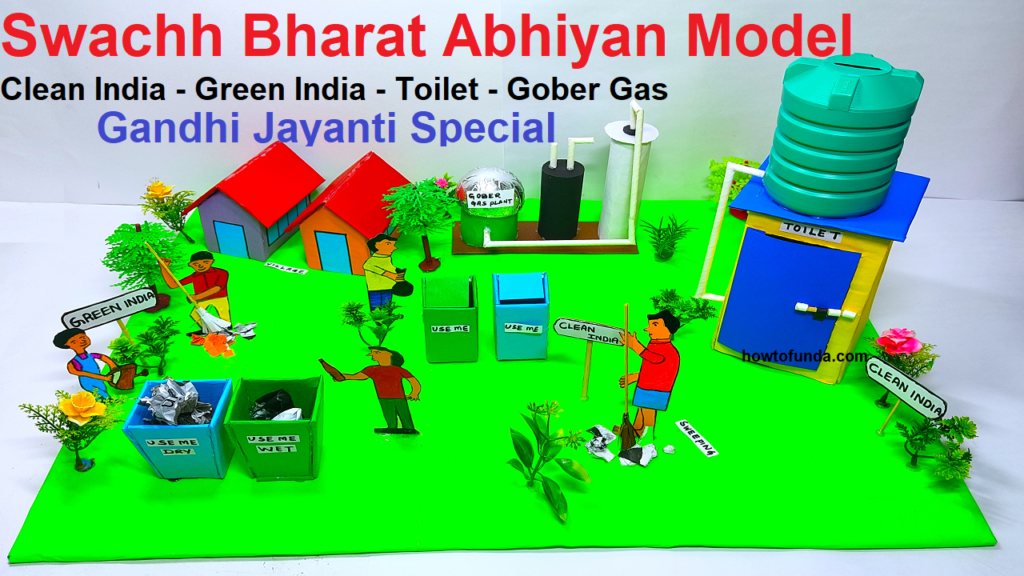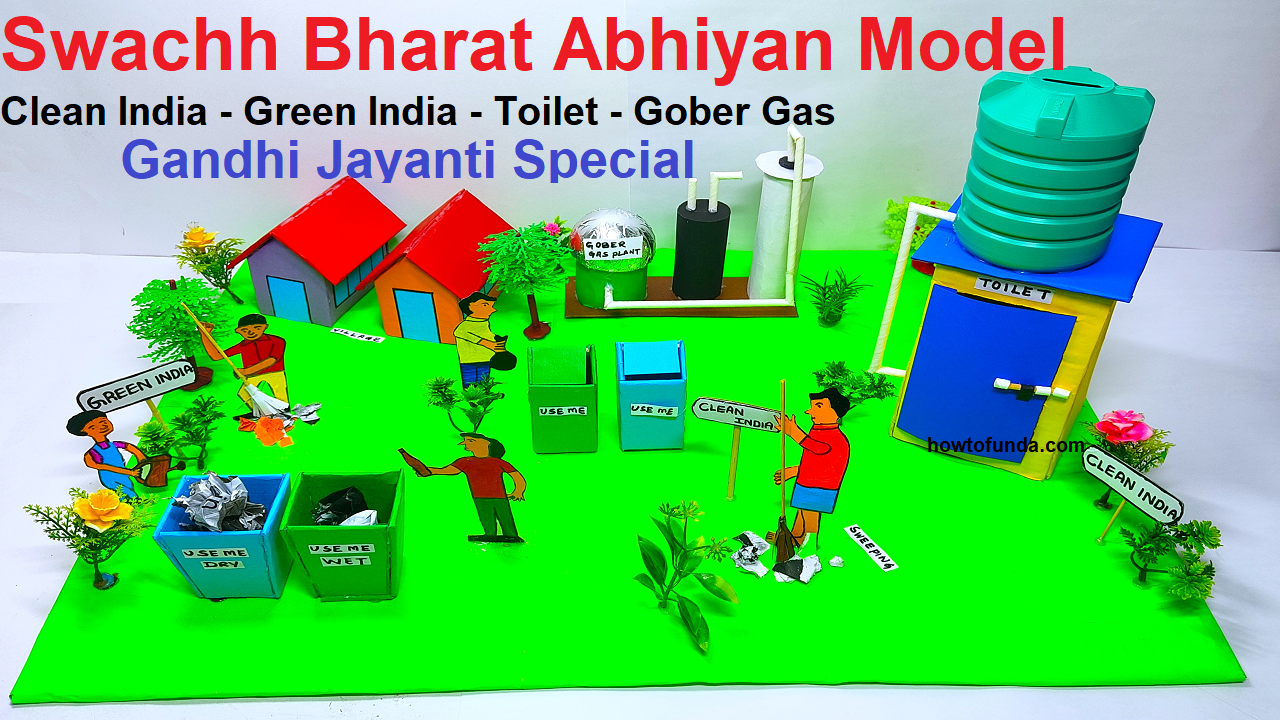In the pursuit of a cleaner, healthier, and more sustainable nation, the Swachh Bharat Abhiyan stands as an iconic initiative that has galvanized communities across India.
Envisioned by the Government of India, this ambitious campaign seeks to transform our urban and rural landscapes by promoting cleanliness, sanitation, and responsible waste management practices.
Swachh Bharat Abhiyan, also known as Clean India Mission, is a nationwide cleanliness campaign launched by the Government of India.
It was officially launched on October 2, 2014, to coincide with the 145th birth anniversary of Mahatma Gandhi, who was a strong advocate of cleanliness and sanitation.
The main objective of the Swachh Bharat Abhiyan is to achieve a clean and open defecation-free India by October 2, 2019, the 150th birth anniversary of Mahatma Gandhi.
The campaign focuses on various aspects, including construction of toilets, solid waste management, and creating awareness about hygiene and cleanliness.
Swachh Bharat Abhiyan addresses both rural and urban areas, aiming to bring about a behavioral change towards sanitation practices.
It encourages community participation and mobilization to ensure sustainability and long-term success of the cleanliness initiatives.
The campaign has made significant progress, with millions of toilets constructed and thousands of villages and cities declared open defecation-free.
Swachh Bharat Abhiyan has received recognition both nationally and internationally, showcasing India’s commitment towards cleanliness and hygiene.
Celebrities, public figures, and citizens from all walks of life have actively supported and participated in the campaign, raising awareness about the importance of cleanliness.
The Swachh Bharat Abhiyan is an ongoing initiative, and it continues to play a pivotal role in transforming India into a cleaner and more hygienic nation.
The “Swachh Bharat Abhiyan Model” encapsulates the spirit of this movement, offering a tangible representation of the initiative’s key tenets and objectives.
Through meticulous attention to detail, this model serves as an educational tool, illustrating the transformative impact of concerted efforts towards a cleaner India.

Creating a Swachh Bharat Abhiyan Model that combines aspects of cleanliness, green initiatives, and sustainable practices like toilet and Gobar Gas production is a wonderful way to promote the vision of a clean and green India. Here’s how you can build this model:
Materials Needed:
- Cardboard sheets (for structure)
- Miniature figurines or cut-outs representing people
- Small plastic or wooden trees (for greenery)
- Clay or playdough (for simulating Gobar Gas)
- Small plastic or wooden animals (for representing cows)
- Acrylic paints or markers
- Glue, tape, scissors, and a cutter
Steps:
Creating the Model:
- Design the Layout:
- Begin by sketching a layout on the cardboard. Include areas for houses, roads, trees, toilets, and a Gobar Gas plant.
- Build Houses and Roads:
- Cut and assemble pieces of cardboard to create miniature houses and roads. Paint or decorate them to represent a clean environment.
- Add Greenery:
- Place small plastic or wooden trees in designated areas to represent a green environment.
- Create Toilets:
- Construct toilet structures using cardboard. Paint them to represent clean and functional toilets. Ensure there is a separate area for waste management.
- Simulate Gobar Gas Plant:
- Use clay or playdough to create a small Gobar Gas plant. Include pipes and containers to represent the process of generating biogas from cow dung.
- Include Miniature Figurines:
- Place miniature figurines or cut-outs to represent people in the model. Position them near houses and toilets to showcase community involvement.
- Add Animals:
- Include small plastic or wooden animals to represent cows, highlighting their role in Gobar Gas production.
- Label Key Areas:
- Use small labels or markers to identify important areas like toilets, Gobar Gas plant, houses, and green spaces.
10 advantages of the Swachh Bharat Abhiyan:
- Improved Public Health: One of the primary benefits of Swachh Bharat Abhiyan is the significant improvement in public health. Access to clean and sanitized surroundings reduces the risk of waterborne diseases, infections, and other health issues.
- Reduction in Open Defecation: The construction of millions of toilets across the country has led to a substantial decrease in open defecation, which is crucial for maintaining personal dignity and preventing the spread of diseases.
- Environmental Benefits: Proper waste management and disposal help in maintaining a cleaner environment. This includes reducing pollution, preventing soil and water contamination, and protecting natural habitats.
- Boost to Tourism and Economy: Clean and well-maintained tourist destinations attract more visitors, which can have a positive impact on the local economy. It also enhances the image of India as a tourist-friendly destination.
- Empowerment of Women: Access to clean and safe sanitation facilities empowers women and girls, as they no longer have to face the risks and discomfort associated with open defecation.
- Enhanced Quality of Life: Clean and hygienic living conditions contribute to an overall improvement in the quality of life. It leads to better physical and mental well-being of individuals and communities.
- Reduction in Water Contamination: Proper disposal of waste and construction of toilets significantly reduce the contamination of water sources, safeguarding the health of both humans and wildlife.
- Job Creation: The Swachh Bharat Abhiyan has led to the creation of numerous employment opportunities in sectors such as sanitation, waste management, and construction of toilets.
- Improved Educational Outcomes: Access to clean and functional toilets in schools encourages attendance, especially among girls. It creates a conducive environment for learning and academic success.
- Behavioral Change and Awareness: The campaign has raised awareness about the importance of cleanliness and sanitation practices. It has led to a positive behavioral change in communities towards maintaining cleanliness and hygiene.
Overall, Swachh Bharat Abhiyan has had a transformative impact on the lives of millions of Indians, contributing to a cleaner, healthier, and more sustainable future for the nation
Educational Notes:
- Explain Swachh Bharat Abhiyan:
- Provide an overview of the Swachh Bharat Abhiyan and its objectives in promoting cleanliness and sanitation across India.
- Discuss Gobar Gas Production:
- Explain the process of Gobar Gas production and how it serves as a sustainable energy source while also managing cow dung waste.
- Highlight the Role of Toilets:
- Emphasize the importance of having clean and accessible toilets in communities for better sanitation and hygiene.
- Promote Green Initiatives:
- Discuss the significance of green spaces, trees, and eco-friendly practices in maintaining a clean and healthy environment.
- Community Involvement:
- Stress the importance of community participation in achieving the goals of Swachh Bharat Abhiyan and sustainable practices like Gobar Gas production.
This model effectively portrays the holistic approach of the Swachh Bharat Abhiyan, encompassing cleanliness, green initiatives, and sustainable practices. It serves as an educational tool to inspire awareness and action towards a cleaner, greener India.
10 slogans on Swachh Bharat:
- “Clean India, Healthy India!”
- “Swachh Bharat, Swasth Bharat!”
- “Keep Calm and Keep India Clean!”
- “Cleanliness is next to Godliness.”
- “Be the change, keep India clean.”
- “Clean India, Green India, Beautiful India.”
- “Let’s pledge for a cleaner tomorrow!”
- “Don’t be mean, keep your surroundings clean.”
- “Cleanliness starts with me, let’s keep India litter-free.”
- “A clean nation is a healthy nation.”

